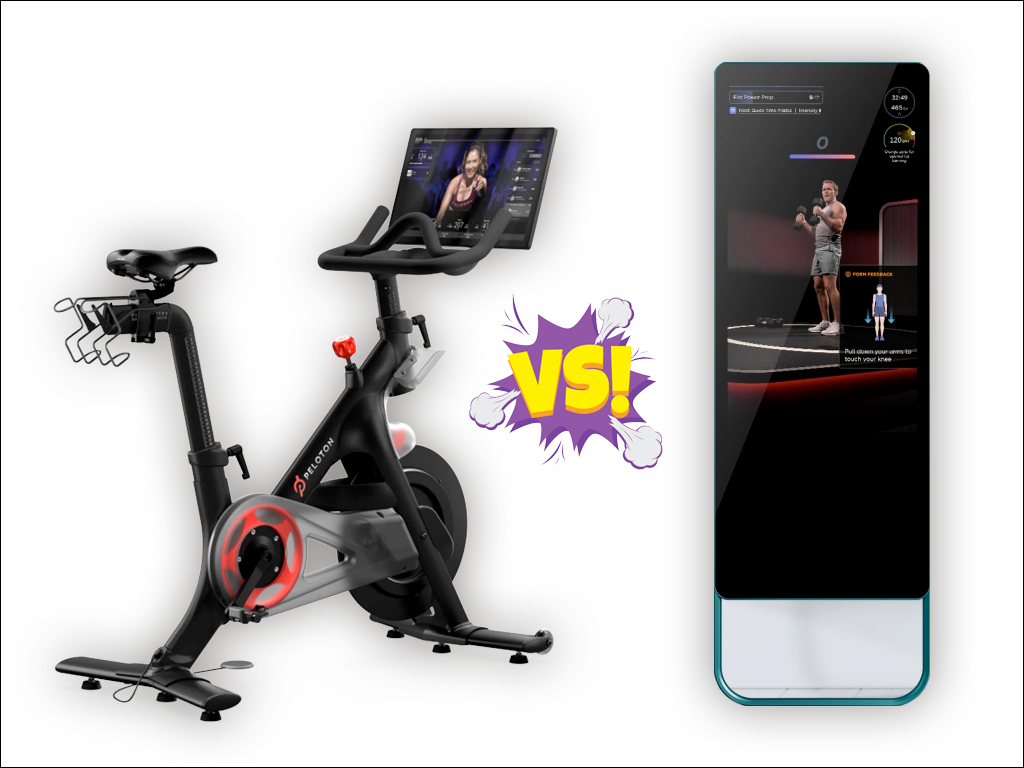The health and wellness industry has seen a surge in at-home fitness solutions, with Peloton and Mirror standing out as two of the most popular choices. Both cater to individuals looking for convenience, variety, and high-quality workout experiences from the comfort of their homes. But how do these two giants compare? Let’s break it down.

Peloton: Revolutionizing Cardio Workouts
Peloton has become synonymous with premium stationary bikes and treadmills, paired with live and on-demand classes. Here are its key features:
-
Equipment Quality:
-
The Peloton Bike and Bike+ boast sleek designs, durable frames, and high-definition touchscreens for streaming classes. The Bike+ even includes a rotating screen for off-bike exercises.
-
The Peloton Tread offers a sturdy build with a slat belt design, providing a smooth running experience.
-
-
Class Variety:
-
Peloton’s platform offers thousands of live and on-demand classes across various disciplines, including cycling, running, strength training, yoga, and meditation.
-
Users can filter classes by length, intensity, instructor, and music genre.
-
-
Community and Motivation:
-
Peloton’s leaderboard feature allows users to compete with others in real-time, fostering a sense of community and friendly competition.
-
Regular challenges and milestones keep users motivated.
-
-
Subscription Costs:
-
The All-Access Membership costs $44 per month, giving multiple household members access to all classes.
-
The equipment itself ranges from $1,445 for the Bike to $3,495 for the Tread+ (as of 2025).
-
-
Who It’s Best For:
-
Ideal for cardio enthusiasts and those who thrive on high-energy, instructor-led sessions.
-
Best for individuals seeking a structured workout schedule with measurable progress.
-

Mirror: A Seamless Blend of Fitness and Home Decor
Mirror is an innovative smart device that doubles as a full-length mirror when not in use. It brings a more discreet, minimalist approach to at-home fitness. Here’s what it offers:
-
Design and Functionality:
-
Mirror’s slim design makes it easy to integrate into any living space without taking up much room.
-
It acts as a screen when activated, displaying instructors and workout metrics.
-
-
Class Variety:
-
Mirror offers over 50 types of workouts, including strength training, cardio, barre, Pilates, yoga, and boxing.
-
Users can access live and on-demand classes, with options for personalized one-on-one training.
-
-
Interactivity:
-
The Mirror uses a built-in camera to provide real-time feedback during live classes (camera use is optional).
-
Personalized profiles allow each family member to customize their workout plans.
-
-
Subscription Costs:
-
The Mirror itself costs $1,495, with a $39 monthly membership fee for class access.
-
One-on-one personal training sessions are available for an additional fee.
-
-
Who It’s Best For:
-
Perfect for individuals who value versatility in workouts and a compact, stylish setup.
-
Suited for users who prefer a broader range of workout types beyond cardio.
-
Final Verdict: Which One Should You Choose?
The choice between Peloton and Mirror ultimately depends on your fitness goals, space availability, and budget:
-
Choose Peloton if you’re passionate about cycling or running and thrive in competitive, community-driven environments. Its immersive cardio experience and leaderboard feature make it a great choice for those who want structured, high-energy sessions.
-
Choose Mirror if you value a versatile fitness platform that offers a wide range of workouts in a compact and elegant design. It’s ideal for those with limited space who enjoy experimenting with different exercise types.
Both Peloton and Mirror have carved out unique niches in the at-home fitness market, and either can elevate your workout routine. Assess your needs, preferences, and budget to make the best decision for your health and wellness journey.
